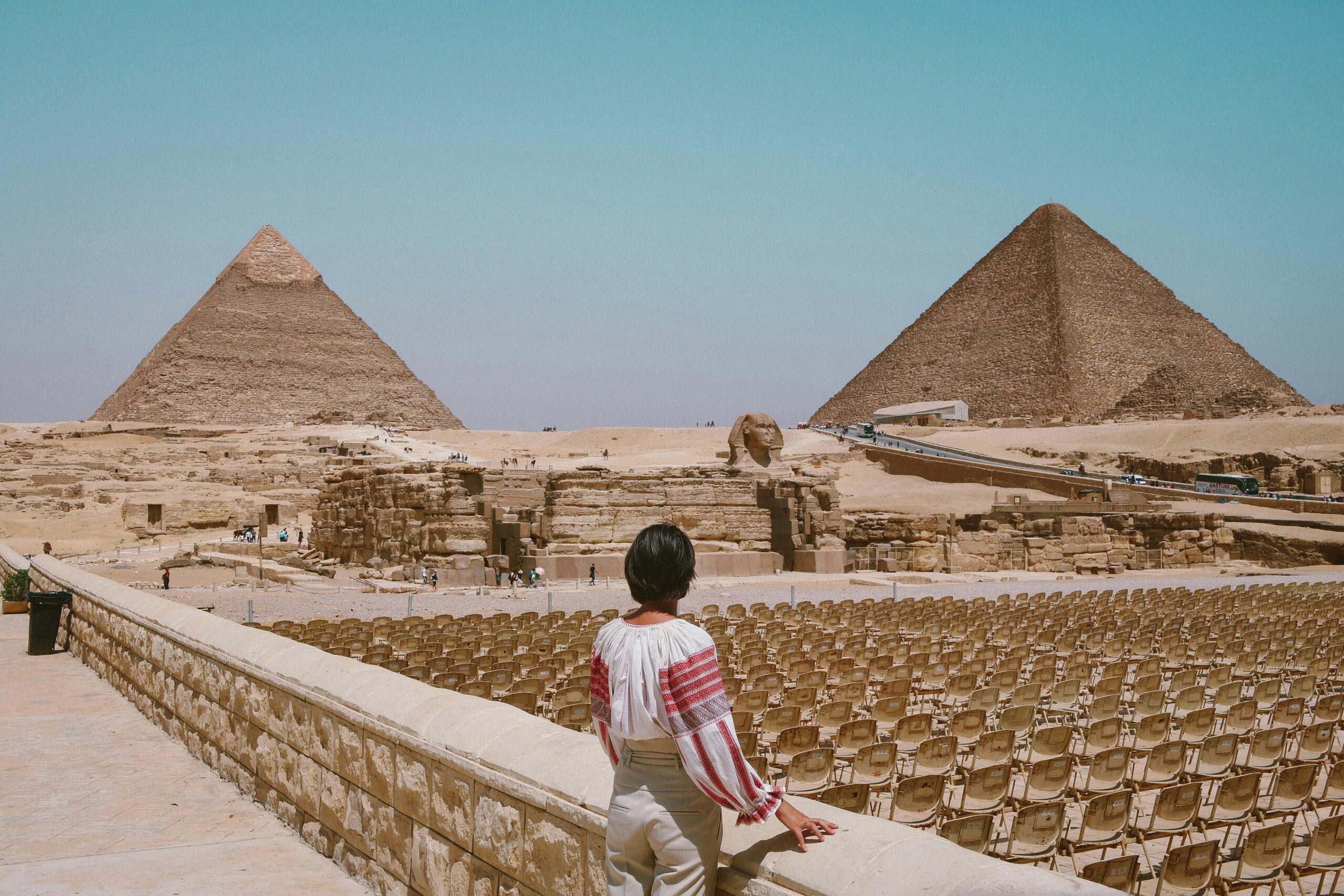Introduction: A Timeless Whisper from the Sands
Close your eyes and imagine the heat of the Egyptian sun beating down on your skin. The scent of desert sand and the Nile’s fertile mud fills the air. Ahead of you, towering against the horizon, stands a structure so colossal it seems to defy logic—a pyramid. For over 4,500 years, these monuments have captivated humanity, not just as tombs for pharaohs, but as testaments to human ambition, ingenuity, and the universal longing for immortality.
But behind the polished limestone and mathematical precision lies a story far richer than textbooks often tell. This isn’t just about stones stacked skyward—it’s about the farmers, laborers, and dreamers who poured their lives into these wonders. Let’s unravel the human history of the Egyptian pyramids, brick by brick, tear by tear, and triumph by triumph.
Chapter 1: The Birth of Immortality – Why Pyramids?
Long before the pyramids, Egypt’s elite were buried in simple mudbrick tombs called mastabas. But around 2630 BCE, a visionary pharaoh named Djoser dared to dream bigger. His architect, Imhotep—a name meaning “the one who comes in peace”—designed the Step Pyramid at Saqqara, stacking six mastabas atop one another. It was revolutionary: the first colossal stone structure in history.
But why pyramids? To the ancient Egyptians, the pyramid’s shape mirrored the primordial mound from which creation sprang. Its sides, aligned with the sun’s rays, symbolized a staircase to the heavens. For pharaohs, it was a vehicle to join the gods. For the people, it was a national project that unified a civilization.
Chapter 2: The Golden Age – Giza’s Iconic Trio
The Great Pyramid of Giza, built for Pharaoh Khufu around 2560 BCE, remains the sole surviving Wonder of the Ancient World. But its perfection didn’t happen overnight.
The Workforce: Not Slaves, But Proud Laborers
Contrary to Hollywood myths, the pyramids weren’t built by slaves. Archaeologists like Mark Lehner uncovered workers’ villages near Giza, complete with bakeries, hospitals, and pay stubs (in beer and bread!). These laborers—skilled artisans and seasonal farmers—rotated in shifts, working not out of fear, but duty. As Zahi Hawass, Egypt’s former antiquities minister, put it: “They called themselves ‘Friends of Khufu’—they were building for eternity.”
Engineering Genius: No Lasers, Just Logic
How did they move 2.3 million limestone blocks, each weighing 2.5 tons? The answer lies in ingenuity:
- Water-Powered Leverage: Wetting sand reduced friction for sledges.
- Ramps & Pulleys: A spiraling ramp system wrapped around the pyramid.
- Stellar Navigation: Aligning pyramids within 0.05 degrees of true north using the stars.
Chapter 3: The Human Cost – Blood, Sweat, and Legacy
Behind the glory lay hardship. Worker skeletons show signs of back-breaking labor and healed fractures—proof they received medical care. Inscriptions reveal camaraderie: teams named “The Drunkards of Menkaure” or “The Vigorous Gang” competed to haul stones faster.
One poignant discovery? A 4,500-year-old papyrus diary by Merer, an overseer, detailing the transport of limestone from Tura to Giza. His entries are mundane (“Day 25: Delivered 30 blocks”) yet deeply human—a reminder that even miracles are built one day at a time.
Chapter 4: Decline & Mysteries – When the Sands Claimed the Giants
By 2300 BCE, pyramid quality declined. Pharaohs shifted focus to hidden tombs in the Valley of the Kings. Why? Economic strain, political instability, and perhaps a loss of faith. The last pyramid, built for Ahmose I (1550 BCE), stood a mere 40 meters tall—a shadow of Giza’s 146-meter titan.
Yet the mysteries endure:
- Hidden Chambers? Recent muon scans reveal voids in the Great Pyramid—could Khufu’s burial chamber still lie undiscovered?
- The Curse of the Pharaohs: A myth born from Victorian sensationalism, but one that speaks to our fear of disturbing the past.
Chapter 5: The Pyramids Today – Bridges Across Millennia
Napoleon famously calculated that the Giza pyramids contained enough stone to build a 3-meter wall around France. But their true value isn’t in volume—it’s in inspiration.
- Cultural Pillars: From the dollar bill’s pyramid to modern art, they symbolize mystery and aspiration.
- A Climate Warning? Erosion patterns suggest the Sphinx and pyramids survived ancient droughts. What might they teach us about today’s climate crisis?
Conclusion: Echoes in Eternity
The pyramids were never just tombs. They were the Instagram posts of their day—declarations of power, faith, and identity. But more than that, they remind us that ordinary people, with ordinary hands, can create the extraordinary.
As you scroll through photos of these wonders, remember Merer and his daily logs. Remember the worker who carved “This side up” into a block, 45 centuries ago. And remember that immortality isn’t just for pharaohs—it’s in the stories we leave behind.





